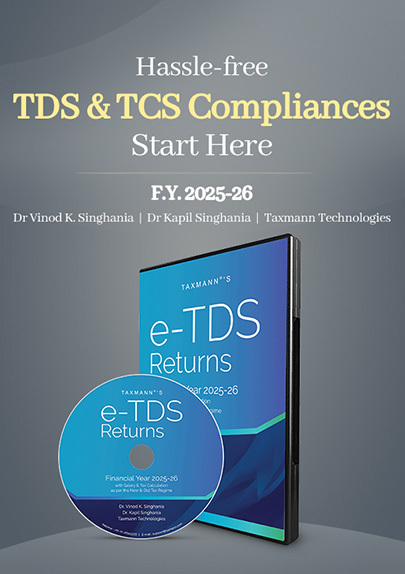Forensic Auditing – Meaning and its Basic Concepts
- Blog|Account & Audit|
- 3 Min Read
- By Taxmann
- |
- Last Updated on 30 June, 2022
Contents:
- Meaning
- Need of Forensic Audit
- Forensic Audit Procedures
- Methodology of Forensic Audit Investigation
- Common Areas where Forensic Audit is used
- Conclusion
Meaning
When it comes to auditing, many of organizations consider it is as simply a statutory requirement for getting the financials examined by a certified accountant to ensure compliance. However, this type of audit (financial audit) is just one of many other types of audits that any organization would undergo. Forensic audit is one among such audits which involves an examination of past financial records of an entity to detect any illegal action, manipulation in the books of accounts, siphoning of funds, etc. The forensic audit begins with the suspicion and doubts and ends with the performance of investigation procedures either to confirm the case or dispel the suspicion.
Unlike financial audits which are focused more on statutory compliance, the forensic audits are designed to investigate the financial records of an entity to derive evidences in support of fraud that can be used in court of law or legal proceedings.
Forensic Auditing – It is an independent, comprehensive and scientific approach of reviewing an entity’s financial statements in order to determine its accuracy, free from material misstatements and importantly, to derive evidences that can be used in a court of law or legal proceedings.
Need of Forensic Audit
As of now, the forensic auditing has emerged as a specialized field in the industry that requires a specific skill set to detect the fraud, leaving no scope for overlap. But, to determine when an organization needs forensic auditing is significant to deal with the early warning signals of fraud. Thus, there are few instances on the occurrence of which an entity should direct for forensic audit like (i) Theft of business information or where business systems have been hacked, (ii) Issues identified by Whistle Blowers, (iii) Reconciliations resulted in unidentified material differences, (iv) Suspicious of fraud or illegal activity (v) Turnover has occurred and balances are showing negative results.
Forensic Audit Procedures
Since the forensic audit is more of investigation and collection of evidences, it is of great importance that the audit should be conducted with an attitude of professional skepticism. However, a scientific approach involving use of forensic audit procedures should be used to conduct the assignments. These procedures are more specific towards detecting possible material misstatements in the financial records that result into fraudulent activities. Besides, forensic data analysis and fraud investigation techniques, a tool named fraud triangle is also used for addressing the presence of three elements which are common to any fraud being committed:-
-
- Incentives – a motive that derives a person to commit fraud
- Attitude – an ability to rationalize the fraudulent behavior
- Opportunity – that enable a person to commit fraud.
Methodology of Forensic Audit Investigation
The forensic audit investigation is the utilization of specialized investigation skills to conduct the forensic audit engagements in such a manner that the outcome can be presented in court of law as evidence. The auditor should use an approach considering both the aspects of whether the fraud could have occurred and whether the fraud could not have occurred. With this approach the forensic auditors will be able to bring the reality more closer to general public especially in the circumstances where perception and reality are not aligned. An auditor can follow a nine step methodology for fact finding in case of forensic audit engagements:-
-
- Accept the forensic audit engagement;
- Evaluate the allegations or suspicions;
- Conduct due diligence background notes;
- Complete the preliminary stage of investigation;
- Check the prediction assuming that there will be a litigation;
- Begin with external investigation;
- Gathering the required proofs and evidences;
- Preparing report on findings; and
- Court proceedings
Common Areas where Forensic Audit is used
With the increase in financial fraud popularly known as white-collar crime, the forensic accounting and auditing has emerged as prominence to ensure the financial growth for businesses and economy as well. Some of the common areas that are to be detected in forensic audit are:-
-
- Asset Misappropriation
- Instances of Corruption
- Extortion
- Financial Statement fraud
- Conflict of interest
Conclusion
To summarize, forensic auditing is a detailed examination of past financial records which requires the expertise of professionals not only in accounting and auditing but also in the area of assessing legal framework and fact finding. The forensic auditor is expected to adopt a practical approach in order to deal with the numerous loopholes which may arise during investigation procedures. With the key benefits of increased credibility, expert accounting, enhanced effectiveness and accuracy, the forensic audit is seen as a rapidly growing area in the detection and prevention of fraud and white-collar criminal activities.
Disclaimer: The content/information published on the website is only for general information of the user and shall not be construed as legal advice. While the Taxmann has exercised reasonable efforts to ensure the veracity of information/content published, Taxmann shall be under no liability in any manner whatsoever for incorrect information, if any.

Taxmann Publications has a dedicated in-house Research & Editorial Team. This team consists of a team of Chartered Accountants, Company Secretaries, and Lawyers. This team works under the guidance and supervision of editor-in-chief Mr Rakesh Bhargava.
The Research and Editorial Team is responsible for developing reliable and accurate content for the readers. The team follows the six-sigma approach to achieve the benchmark of zero error in its publications and research platforms. The team ensures that the following publication guidelines are thoroughly followed while developing the content:
- The statutory material is obtained only from the authorized and reliable sources
- All the latest developments in the judicial and legislative fields are covered
- Prepare the analytical write-ups on current, controversial, and important issues to help the readers to understand the concept and its implications
- Every content published by Taxmann is complete, accurate and lucid
- All evidence-based statements are supported with proper reference to Section, Circular No., Notification No. or citations
- The golden rules of grammar, style and consistency are thoroughly followed
- Font and size that’s easy to read and remain consistent across all imprint and digital publications are applied




 CA | CS | CMA
CA | CS | CMA
